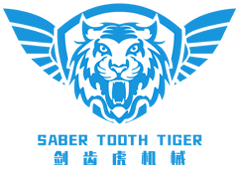24
2025
-
07
Enhancing Efficiency in Electrical Manufacturing: The Role of CNC Busbar Bending and Punching Lines
The CNC busbar bending and punching line is an essential tool in the electrical manufacturing industry, particularly for those engaged in the production of busbars. These machines are engineered to automate the bending and punching processes, which are critical in shaping conductive materials used in electrical systems. By employing computer numerical control (CNC) technology, manufacturers can ac
The CNC busbar bending and punching line is an essential tool in the electrical manufacturing industry, particularly for those engaged in the production of busbars. These machines are engineered to automate the bending and punching processes, which are critical in shaping conductive materials used in electrical systems. By employing computer numerical control (CNC) technology, manufacturers can achieve high precision and repeatability, which are crucial for maintaining quality standards in electronic products.
One of the primary advantages of utilizing a CNC busbar bending and punching line is the significant reduction in production time. Traditional methods often involve manual labor and multiple setups, leading to longer lead times and increased labor costs. However, with an automated CNC system, the entire process can be streamlined; operators can input specific design parameters, and the machine executes the tasks with minimal human intervention. This not only accelerates production but also decreases the likelihood of errors associated with manual processing.
Additionally, the flexibility of CNC busbar bending and punching lines is noteworthy. These machines can easily accommodate a variety of designs and sizes, making them suitable for both small batch production and large-scale manufacturing. This adaptability enables companies to respond more effectively to changing market demands and customer specifications, ensuring they remain competitive in a rapidly evolving industry.
Another critical aspect is the precision offered by CNC technology. The accuracy of bends and punches is vital for ensuring the proper fit and function of electrical components. CNC systems can achieve tolerances that are often unattainable with manual methods, thereby enhancing the overall quality of the products. This precision not only ensures compliance with industry standards but also reduces material waste, contributing to a more sustainable manufacturing process.
Moreover, integrating CNC busbar bending and punching lines into the production workflow can lead to improved safety. Automated systems reduce the need for manual handling of heavy materials, thereby minimizing the risk of workplace injuries. As safety regulations become increasingly stringent, employing such technologies can help companies maintain compliance while also protecting their workforce.
In conclusion, CNC busbar bending and punching lines play a pivotal role in modern electrical product manufacturing. By enhancing efficiency, ensuring precision, and promoting safety, these systems are invaluable assets for manufacturers aiming to improve their operations. As the industry continues to evolve, investing in advanced technologies like CNC systems will be essential for sustaining growth and competitiveness in the market.
One of the primary advantages of utilizing a CNC busbar bending and punching line is the significant reduction in production time. Traditional methods often involve manual labor and multiple setups, leading to longer lead times and increased labor costs. However, with an automated CNC system, the entire process can be streamlined; operators can input specific design parameters, and the machine executes the tasks with minimal human intervention. This not only accelerates production but also decreases the likelihood of errors associated with manual processing.
Additionally, the flexibility of CNC busbar bending and punching lines is noteworthy. These machines can easily accommodate a variety of designs and sizes, making them suitable for both small batch production and large-scale manufacturing. This adaptability enables companies to respond more effectively to changing market demands and customer specifications, ensuring they remain competitive in a rapidly evolving industry.
Another critical aspect is the precision offered by CNC technology. The accuracy of bends and punches is vital for ensuring the proper fit and function of electrical components. CNC systems can achieve tolerances that are often unattainable with manual methods, thereby enhancing the overall quality of the products. This precision not only ensures compliance with industry standards but also reduces material waste, contributing to a more sustainable manufacturing process.
Moreover, integrating CNC busbar bending and punching lines into the production workflow can lead to improved safety. Automated systems reduce the need for manual handling of heavy materials, thereby minimizing the risk of workplace injuries. As safety regulations become increasingly stringent, employing such technologies can help companies maintain compliance while also protecting their workforce.
In conclusion, CNC busbar bending and punching lines play a pivotal role in modern electrical product manufacturing. By enhancing efficiency, ensuring precision, and promoting safety, these systems are invaluable assets for manufacturers aiming to improve their operations. As the industry continues to evolve, investing in advanced technologies like CNC systems will be essential for sustaining growth and competitiveness in the market.
Related news





